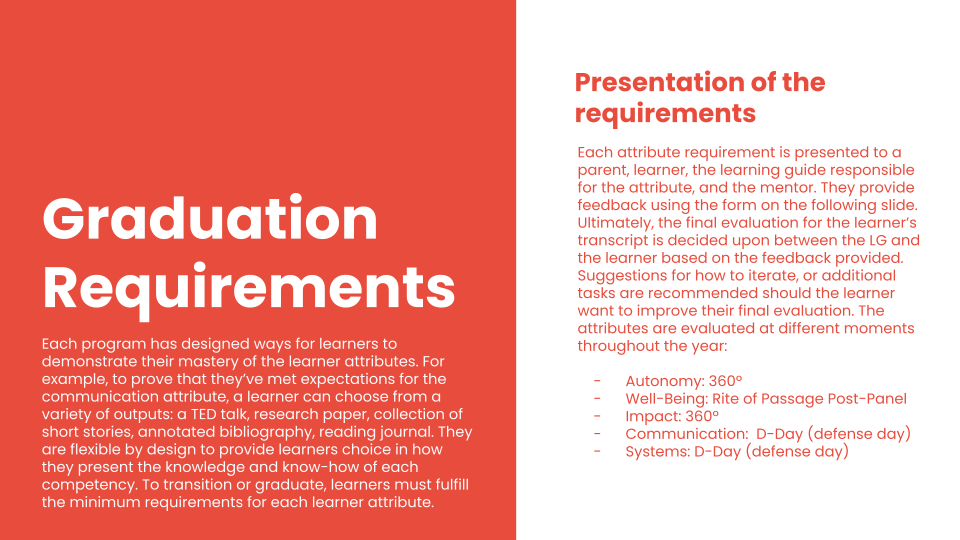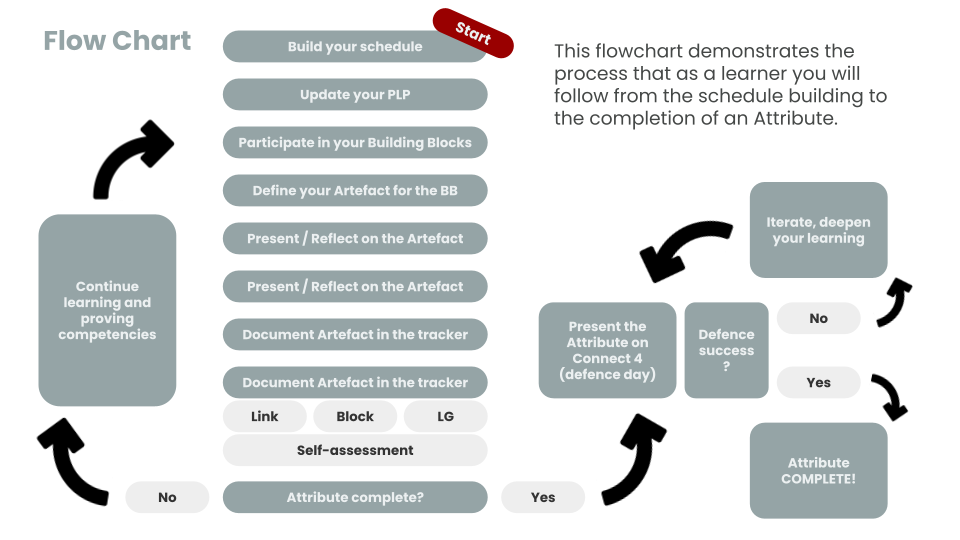Pathways: Where Futures Begin.
Redefine Achievement, Showcase Strengths; Engage, Enrich, Empower!
Exams often favour certain students, creating inequity in assessment. While many employers no longer hire based on exam results, many educators and bureaucracies still resist exploring other options.
Pathways aims to disrupt the status quo by offering a powerful example of effective, equitable assessment alternatives which generate new learning experiences and promote deeper engagement.
Why?
Outdated exams linger despite their shortcomings in assessing real potential. Pathways innovates, illuminating myriad avenues to showcase student strengths, fostering profound learning and breaking conventional assessment boundaries.
It is vital, awakening educators to assess competencies beyond exams. Pathways offers curated dashboards, accommodating diverse goals including mandated exam results.
How does it work?
Students engage in multiple diverse commitments, moving beyond traditional exams. They align activities with global sustainability goals, focusing on seven areas, organised around autonomy, wellbeing, impact, communications, natural systems, human systems, numeric systems. Sub-categories under each attribute are mapped to competencies. They:
- Build their schedules
- Craft personal learning plans
- Design post-graduation pathways
- Produce artefacts showcasing mastery across attributes
- Develop an anthology of completed outputs
- Engage in collaborative projects – impact, changemaking & service learning
- Present capstone projects
- Track learning digitally
- Reflect and self-assess using quality rubrics
- Opt into Open Path learning track in order to pursue mandated exams or undertake passion projects
- Curate a Learning Vitae and portfolio
- Undertake wellbeing rites of passage
- Prepare defense-day dialogues
- Showcase readiness for graduation with a comprehensive 360 review
Steps to Learnlife Pathways
Step 1: co-create a vision and ideate
- Embark on a collective exploration of possibilities
- Research Learnlife Pathways either in person or online
- Familarise yourself and community with possible alternatives to traditional measurement processes
- Find out what alternative entry programs already exist for a range of universities and college
- Research what local and regional universities and employers need in terms of their entry
- Co-create a vision for what your 'pathways' could be and any existing mandated requirements
Step 2: interrogate existing beliefs
- identify all stakeholders
- survey the community and all stakeholders in relation to their existing beliefs around exams and measuring learning
- identify key beliefs and anxieties
- develop strategies to help inform the relevant stakeholders as to why there are better ways to make learning visible
- write research papers as appropriate for different stakeholders to open up thinking
Step 3: grow the 'futures' network
- develop a strategy for establishing or strengthening connections with a wide range of players relevant to the future pathways of the students
- include a cross section of any large scale employers in the region and business entrepreneurs
- create or strengthen connections with universities and colleges inviting them to speak with the students and observe some 360 presentations and capstone project defense days
- create events where the students interact with the employers, entrepreneurs and deans
Step 4: create working groups to explore and implement Pathways
- identify community members with a strong passion to join a guiding coalition to implement Learnlife Pathways
- invite a broad range of representatives from all stakeholders to join this guiding coalition
- give the guiding coalition the mission to explore and prototype multiple ways of making learning visible
- identify a parallel working group who can provide professional development to all staff on associated topics
- target ways to strengthen the sense of a rigorous learning culture for all
Step 5: engage with Learnlife to access direct training as required
- enrol in Learnlife online teacher training in topics where there are gaps or weaknesses in the different strengths of any working group
- download relevant competency rubrics for Pathways
- download digital competency trackers for use in implementing Pathways
- identify and train staff in order to grow their coaching ability, necessary to strengthen their role in helping students prepare for 360s, defense days, impact projects, capstone projects and a diverse range of learning artefacts
Step 6: start small and grow the program organically
- set realistic goals when implementing Pathways
- start small and let the growth be gradual in its expectations and organic in scope
- allocate support to any student who self-nominates in terms of a lack of confidence in implementation
- provide scaffolds as necessary to promote the growth in understanding of what might strengthen graduation documentation, including a learning vitae, portfolio curation, capstone projects, 360s, impact collaborations, and along with a diverse range of artefacts
More detail:



